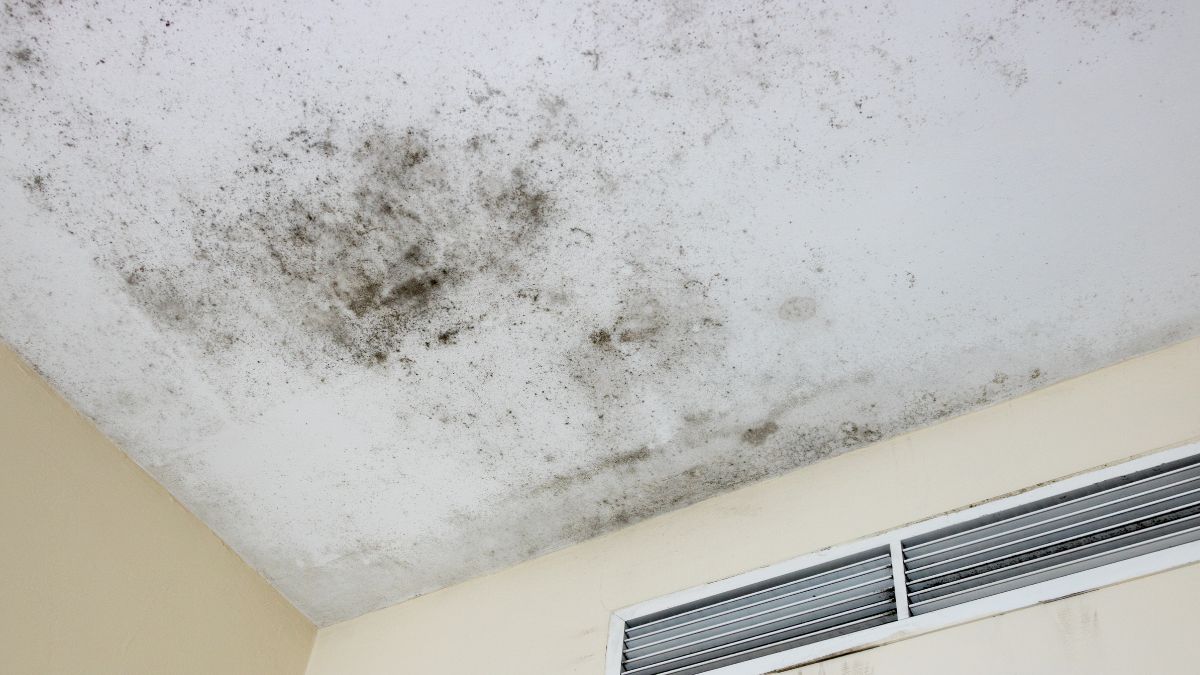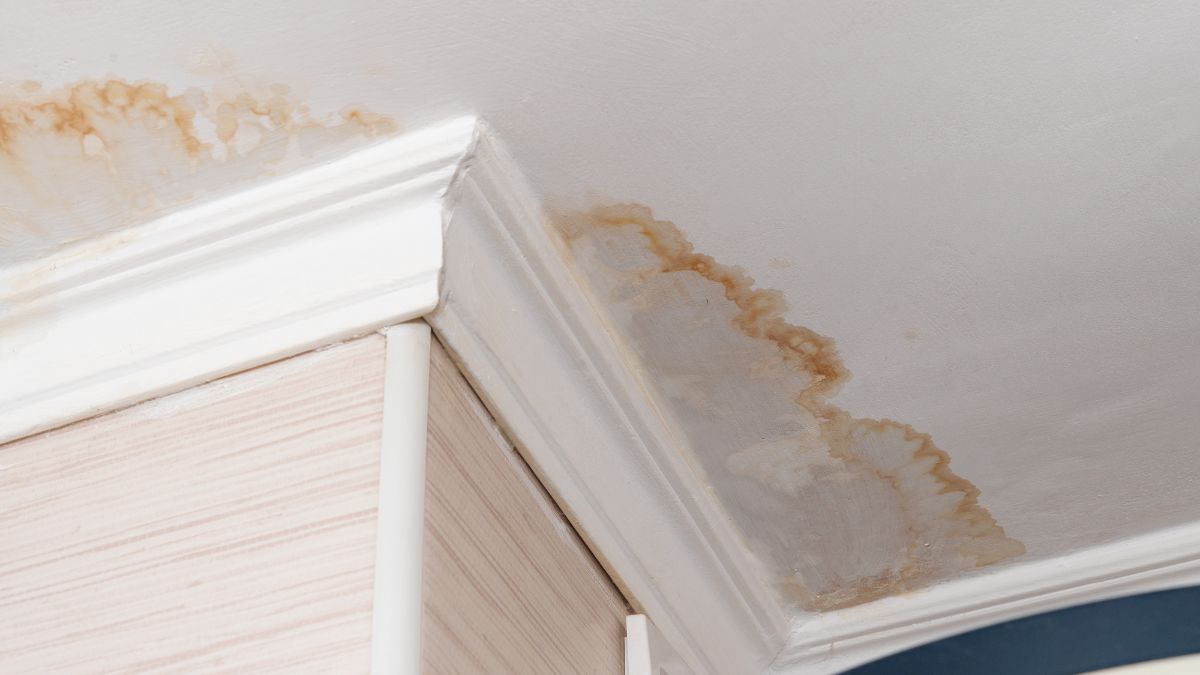
by Mold-B-Gone | Oct 23, 2023 | Mold Facts, Mold Removal
Mold is more than a mere aesthetic concern; it’s a sneaky infiltrator that brings a range of health problems, from respiratory issues, skin irritation, and allergic reactions to red, itchy eyes. Not only that, but mold also endangers the very structural foundation of buildings, making it a vital concern to address promptly and effectively to safeguard both people and properties.
Hence, timely interventions, like availing of a mold removal service in Atlanta, can be critical in managing and mitigating mold issues.
The Role of Air Purifiers in Battling Mold
It’s a common query: do air purifiers help with mold? The short answer is yes, they do, but with certain limitations. Air purifiers, especially those equipped with HEPA filters and UV-C technology, are proficient in capturing mold spores, preventing them from proliferating and spreading across your living spaces.
This means that while an air purifier helps with mold in terms of curbing airborne spores and maintaining air quality, they’re not a full-fledged solution for established mold infestations.
Read more: Indoor Air Quality: Why It Matters and How to Improve It
In the Ducts: A Different Mold Story
However, there are situations where even the most efficient air purifier struggles. If you’re thinking, “Can an air purifier help with mold in my air ducts?” it’s crucial to understand that mold in air ducts presents a unique challenge.
Once mold secures a foothold in this hidden area, fueled by accumulated moisture and debris, it can disperse spores throughout your space even as you breathe what you believe to be purified air. Therefore, while air purifiers can assist, they are not capable of rectifying mold issues within ductwork, and a professional cleaning service becomes indispensable.
The Limits of Air Purifiers in Mold Mitigation
It is pivotal to grasp that while air purifiers help with mold spores and contain the airborne spread to an extent, they don’t address the root cause or eliminate established mold colonies. Will an air purifier help with mold completely? No.
To eradicate mold, a combination of thorough cleaning, preventive practices, and strategic remediation, like managing humidity, fixing leaks promptly, and enhancing ventilation, is essential. Utilizing air purifiers should be seen as a supplementary preventive measure, not a solitary solution to a mold problem.
When the situation slips beyond what air purifiers can manage, that’s when specialists step in. Mold Removal Service in Atlanta, with a track record of securing thousands of homes in Atlanta from mold perils, steps in as your shield against mold infestations. Get in touch with us now and step into a future free from mold worries!

by Mold-B-Gone | Oct 9, 2023 | Uncategorized
Mold: a sneaky, silent intruder that invades homes, causing destruction and potential health risks. But how exactly does it manage to find its way into various spaces and objects in our homes? The answer is simple: through the air.
Understanding how quickly black mold spreads, as well as the rate and mediums through which other types of mold spread, is crucial to safeguarding your home and health.
What Makes Mold Tick?
Can mold spread through the air? With the ability to start developing on damp surfaces within just 24 to 48 hours, mold reproduces by releasing spores—tiny, lightweight entities that can easily travel through air and water and even hitch a ride on people and animals.
These spores can infiltrate your living or working spaces, where they can find new areas to colonize, especially when the conditions are right. Consequently, understanding and monitoring the living conditions that promote mold growth is pivotal in mitigating mold-related problems.
The Stealthy Travel of Mold Spores
Does mold spread through the air? Yes, and often without being detected until it’s too late. The tiny spores released by mold colonies are designed for optimal travel through the air, enabling them to invade new territories, including your home. Once they find a hospitable environment—think damp, dark, and warm—they latch onto suitable surfaces and begin their destructive journey, further spreading within 1–12 days, depending on the conditions.
Potential Dangers of Mold in Your Living Space
While mold spores are omnipresent in our environment, problems arise when they establish colonies within our living and working spaces. For individuals who are sensitive or allergic to mold, exposure to these spores may lead to various health issues, ranging from mild symptoms like coughing and wheezing to severe reactions and chronic health conditions.
Can black mold spread through the air and pose threats to our well-being? Certainly, thus, an immediate response is crucial upon discovering a mold infestation to protect not just your property but also the health of those inhabiting the space.
Safeguarding Your Space Against Mold
Taking the next steps toward mold removal and remediation, including comprehensive cleaning, repair, and disinfection of salvageable property, is vital. Mold cleaning services in Atlanta offer a solution for ensuring the safe and effective removal of mold and restoring the integrity of your home.
In a city like Atlanta, where humidity can provide a haven for mold, turning to certified experts like Mold-B-Gone ensures that your home is in safe hands. Don’t let mold linger; call us now and take a firm stand against mold infiltrating your home.

by Mold-B-Gone | Sep 20, 2023 | Mold and Depression, Mold and Infants, Mold Facts
Mold remediation is an indispensable service for ensuring that residential and commercial buildings remain safe and free from the hazardous impacts of mold growth. A common concern among property owners is: Can mold be completely removed from a house?
The straightforward answer is that remediation can drastically reduce mold populations. Yet, it doesn’t entirely eliminate all mold spores from a premise. This often leads to another pressing query: Can mold come back after remediation? Addressing this concern requires a comprehensive understanding of mold growth conditions and the efficacy of remediation procedures.
Triggering Factors for Mold Growth
The principal culprits behind mold manifestation are moisture and inadequate ventilation. Even after a thorough remediation, if the underlying issues leading to moisture accumulation are not rectified, mold can potentially make an unwelcome return. Knowing the answer to whether mold can come back after treatment is a stepping stone toward formulating preventive measures.
Mold exposure, particularly from certain toxic strains, could pose serious health risks to pregnant women and infants. There’s been a notable discourse about the occurrence of mold in everyday items like sippy cups and its potential to adversely affect an infant’s health.
Water Damage Restoration: A Vital Step
Often, the genesis of mold infestation is water damage. Situations like flooding, leakages, or high humidity are breeding grounds for mold. Swift and efficient water damage restoration is pivotal to thwarting mold proliferation. This includes expunging water, drying the affected regions, mending any damage, and resolving the moisture sources.
Preventive Strategies Post-Remediation
Post-remediation, it is imperative to adopt certain preventative strategies to avert mold reoccurrence. Firstly, it’s crucial to identify and rectify all sources of moisture. This could entail repairing leaky plumbing, replacing old appliances, or enhancing ventilation within the premises.
Continuous monitoring of these areas, especially post-remediation, is fundamental to preventing mold resurgence. Keeping the humidity levels within your premises in check can significantly diminish the odds of mold reemergence. This addresses the concern of whether mold will come back after remediation.
Your Path to a Mold-Free Environment
If mold recurrence is a concern, consulting with mold experts in Atlanta is a wise decision. With Mold-B-Gone Remediation, you’re not just getting remediation; you’re investing in a long-term mold-free environment. Our proficient team addresses not only the visible mold but delves deeper to rectify moisture sources, ensuring mold doesn’t find its way back to your premises.
Are you concerned about mold reemergence? Connect with Mold-B-Gone Remediation, where eradication meets prevention, ensuring you a safe, mold-free dwelling. Your peace of mind is just a call away.

by Mold-B-Gone | Sep 13, 2023 | Health, Killing Mold, Mold Facts
When faced with property damage, understanding the problem at hand is half the battle won. The presence of moisture in homes can lead to two prevalent issues: water damage and mold growth. Although related, these two problems have different implications and remediation strategies.
Water Damage vs. Mold
Water damage is often an immediate consequence of flooding, leaks, or excessive moisture. It becomes apparent soon after a water mishap, making it easier to address promptly. However, if left unattended, water damage can lead to a more sinister problem—mold.
Mold, on the other hand, is a stealthy invader. It might take weeks before mold manifests visually or through a musty odor. By this time, mold spores could have already spread to various areas, making eradication more challenging. Mold slowly devours the surfaces it grows on, potentially causing irreversible damage over time.
How Mold Emerges From Water Damage
Excess water or moisture is the breeding ground for mold spores to thrive and multiply. Even minor water leaks, if undetected, can create a favorable environment for mold. The slow but persistent growth of mold might not only damage the property; it can also pose serious health risks to the inhabitants.
The Threat of Black Mold vs. Water Damage
When comparing black mold vs. water damage, the former presents a more menacing challenge. Black mold, also known as Stachybotrys, is infamous for causing various health issues, ranging from mild allergies to severe respiratory problems. In contrast, water damage primarily threatens the structural integrity of the property. However, both issues necessitate immediate attention and remediation to prevent further deterioration.
Seeking Professional Help
Whether dealing with water damage or mold, professional intervention is crucial for a thorough and effective resolution. DIY efforts might not only prove ineffective but could also potentially exacerbate the problem.
When it comes to mold remediation, especially, the need for a specialized approach is imperative. A mold removal specialist in Atlanta can provide expert solutions, ensuring the complete eradication of mold and the prevention of future infestations.
Read more : Top 9 Reasons To Get Your Home Or Business Dried Professionally After Water Damage?
Entrust Your Remediation Needs to the Experts
At the crossroads of water damage and mold lies the solution that addresses both issues comprehensively. Mold-B-Gone Remediation has positioned itself as a reliable partner in navigating these challenging remediation processes. With our expert touch, you can restore your property to its former glory and ensure a safe, mold-free environment. Act today to secure your home against the perils of water damage and mold. Reach out to us for a consultation, and let’s chart the path to a secure, restored, and mold-free dwelling.

by Mold-B-Gone | Aug 17, 2023 | Mold and Depression, Mold and Infants, Mold Facts
The word “mold” is perceived to be in the same category as decay and rot. Objectively speaking, there are thousands of mold species out there. Some are helpful in that they help in the recycling of organic matter. That said, the majority that naturally occur in the home due to dampness or humidity have a negative effect on the body. Their spores produce mycotoxins that are absorbed through the intestines, lungs, or skin. Thus, mold can affect your heart and cause other health issues.
Respiratory Issues and Asthma
Mold may also cause chest pain and respiratory issues. If a person has asthma, mold exposure could worsen the situation and trigger an attack. They might also require an inhaler to manage the symptoms. Research has shown that higher levels of mold within homes could start cases of asthma in school-aged children.
Pneumonitis
Exposure to a significant amount of mold can trigger a severe reaction known as hypersensitivity pneumonitis. That leads to short- or long-term lung inflammation. Common symptoms are headache, cough, and muscle aches. These symptoms last a few days but can resolve if the exposure is eliminated.
Infections
Some people can breathe in mold spores without experiencing health complications. However, those who have respiratory vulnerabilities are at a higher risk of lung infection. These infections may include valley fever, sporotrichosis, histoplasmosis, and aspergillosis. You may be at a higher risk of getting these infections if you have sarcoidosis, cystic fibrosis, tuberculosis, asthma, or HIV.
Heart and Circulatory Issues
Mold can cause heart problems because of the presence of mycotoxins. Mycotoxins from black mold may be breathed in, ingested, or absorbed into the skin. When the exposure is prolonged, these toxins can enter the bloodstream, showing up as blood-related inflammations or infections. Mold can also cause heart palpitations, internal bleeding, heart inflammation, and blood clots. Seek immediate medical attention should you have any of these symptoms. They can quickly become severe, so treatment should be given right away.
Chronic Fatigue
When there is prolonged mold exposure, the immune system produces a sedative called chloral hydrate. It is a defense mechanism against mold in the circulatory system. Unfortunately, some of the negative consequences are chronic fatigue, muscle pain, drowsiness, and joint pain. It can be tricky to catch on to the cause of these symptoms. Once they become apparent, it would be advisable to seek medical help and mold removal assistance immediately afterward.
Treatment
Once you know the mold is causing health problems, consult your medical practitioner immediately. The source of the mold also has to be eliminated. That means hiring a professional remediation team so there is no further exposure to mold spores. It can be costly but ultimately worth it to make you and your family as safe as possible.
Fortunately, Mold-B-Gone specializes in mold removal in Atlanta. If you have any queries, give us a call. We will help sort out any cases of mold in your house or institution.





